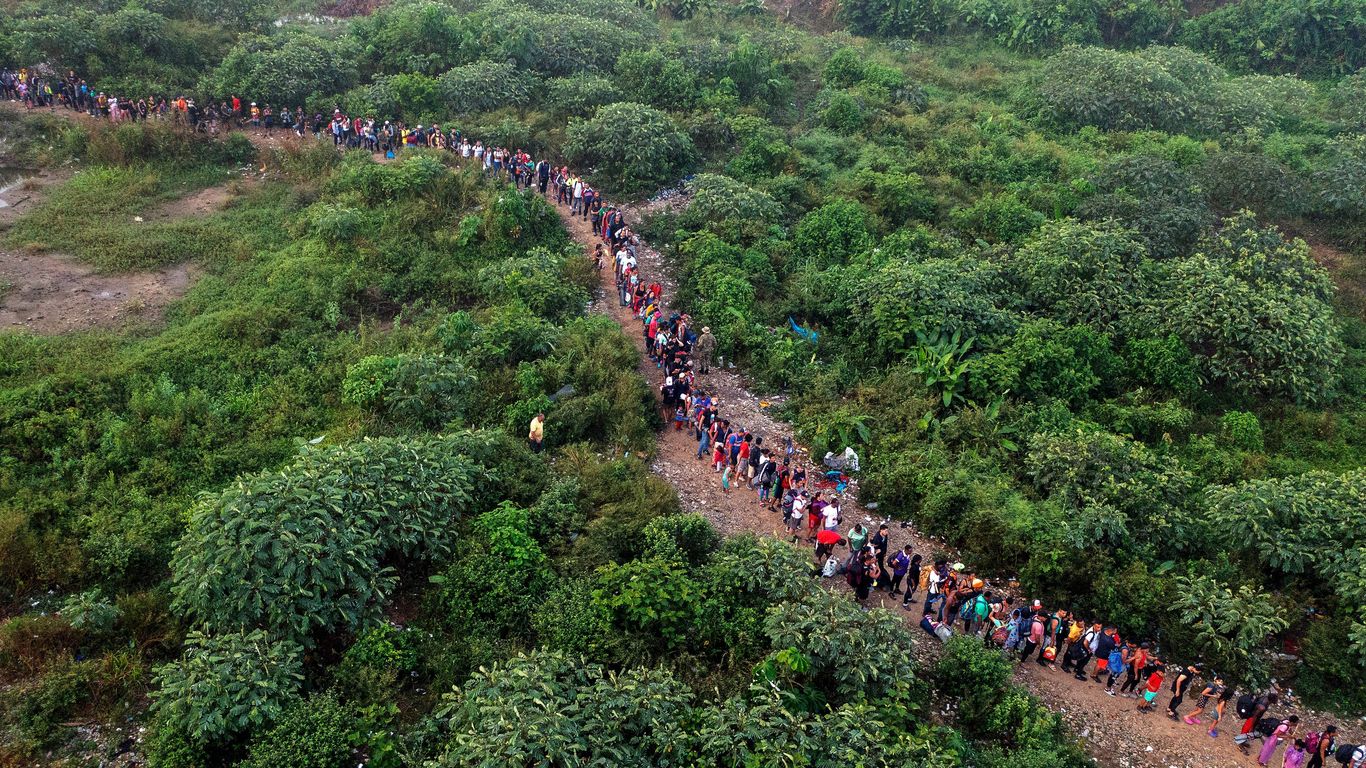The treacherous Darién Gap, a formidable natural barrier separating Colombia and Panama, has recently witnessed an unprecedented and dramatic decline in migrant crossings, signaling a significant shift in global migration patterns towards the United States. New data indicates that the once-bustling route, a critical segment of the perilous journey for thousands, has seen its traffic plummet to near-zero levels, a development with profound implications for immigration policy and border enforcement across the Americas.
This sharp reduction is underscored by stark figures: only a mere ten individuals reportedly traversed the Darién Gap northward in June, according to Panamanian migration authorities. This stands in stark contrast to the surge seen in August 2023, when over 82,000 people navigated the dangerous path, contributing to a historic rise in migrant crossings at the U.S.-Mexico border. Such a drastic decrease marks the lowest monthly traffic since the early 2010s, reminiscent of the near halt during the global pandemic.
The Trump administration has been swift to claim responsibility for this significant drop, attributing it to intensified enforcement measures along the U.S. southern border. Officials from Homeland Security assert that the world is now receiving a clear message: America’s borders are closed to those attempting unlawful entry. This narrative suggests a direct correlation between the administration’s stringent approach to border security and the observed downturn in human movement through this hazardous corridor.
However, credit for the decline is also strongly claimed by Panama’s President José Raúl Mulino, who initiated a severe crackdown on Panama migration earlier this year. Mulino’s administration ordered the closure of vital migrant transit centers along the Darién Gap, a decisive action he maintains is central to his promise to secure the region. His declaration, “We will not allow more migrants in the Darién region,” underscores a national commitment to curtailing this flow, with reports even suggesting some migrants are now using the route in reverse to return home.
Despite these claims of success from both U.S. and Panamanian authorities, the precise reasons behind this precipitous fall in migrant traffic remain subject to expert debate. Immigration analysts suggest that migrants and smuggling networks may be in a strategic holding pattern, cautiously awaiting the full implications and outcomes of the Trump administration’s evolving enforcement actions. This uncertainty highlights the complex interplay of policy, perception, and individual decision-making in the dynamic landscape of human migration.
The sudden cessation of crossings has also left an indelible mark on the indigenous communities living along the Darién Gap. Once reliant on the influx of migrants for their livelihoods, these villages have reportedly transformed into “ghost towns.” Many residents had adapted their traditional farming practices to assist migrants, offering boating services across swamps or selling essential supplies for the arduous journey. The economic disruption underscores the intricate human dimensions of border challenges and the ripple effects of policy shifts.
The Darién Gap itself remains a formidable and deadly obstacle. This 60-mile stretch of roadless, dense jungle is infamous for its natural hazards, including crocodiles, venomous snakes, and challenging terrain. Human rights organizations consistently highlight the severe risks faced by migrants, from exposure to disease like yellow fever and malaria to encounters with dangerous drug gangs. This treacherous environment serves as the only break in the vast Pan-American Highway, adding to its unique and perilous reputation.
An analysis of migration data from 2020 through 2024 reveals that the majority of individuals who embarked on this perilous journey originated from Venezuela, followed by Haiti and Ecuador. Experts indicate that these migrants were often fleeing dire circumstances in their home countries, including significant political unrest, pervasive gang violence, devastating weather disasters exacerbated by climate change, and extreme poverty. Their desperate pursuit of safety and opportunity underlines the profound socio-economic drivers behind global human migration.
Ultimately, the dramatic fall in migrant crossings through the Darién Gap reflects a pivotal moment in the ongoing discourse surrounding international migration. While the immediate causes are debated, the combined pressures of tightened immigration policy in both the U.S. and Panama, alongside the inherent dangers of the route, appear to have effectively stemmed the tide. The future trajectory of this critical migration route will undoubtedly continue to be shaped by evolving geopolitical strategies and humanitarian considerations.






Leave a Reply